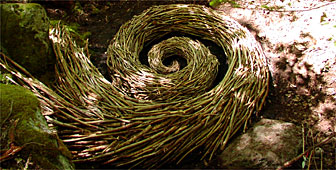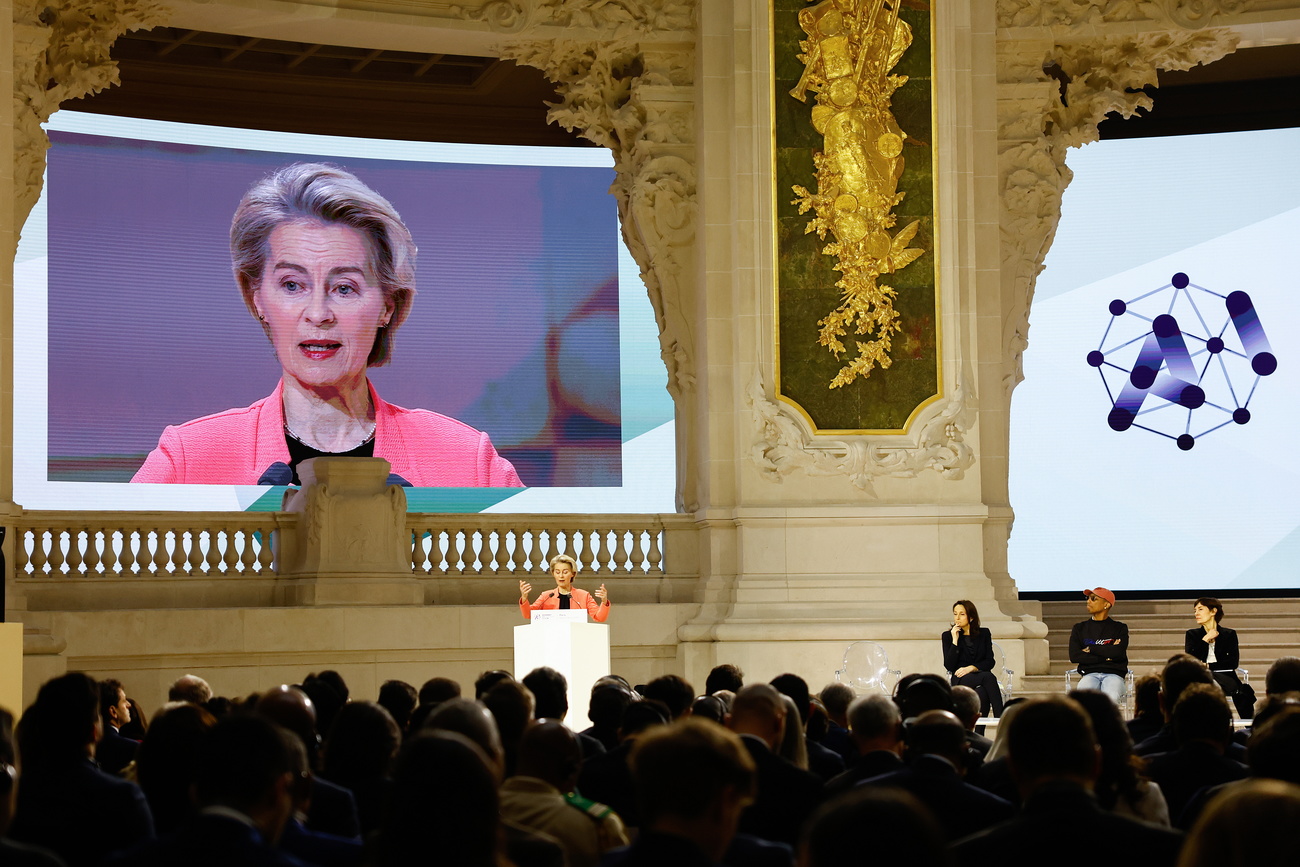Artists branch out in Grindelwald

Working with branches, twigs and leaves, artists from around the world have created art out of nature in the Bernese Oberland resort.
“The aim is to create a work of art out of nature and let it return to nature,” says vegetation artist Peter Hess, the man behind the Landart Festival in Grindelwald. “It raises the question, ‘what is going to happen to it?’ The rules state that the art has to be made without leaving any traces.”
For the fourth year in a row, Hess has drawn about a dozen artists, most of whom work as florists by day, to the international competition in Grindelwald. They are brought to a forest on the edge of the resort, where they are given a week to create their masterpieces.
A Belgian duo has erected an uneven row of light arches, made from long thin branches sawed from dead wood. You could imagine them swaying in the wind, if they had more substance.
Moving columns
“There is a lot of movement if you keep them in sight as you walk down the road. Optically, they seem to move. Every column seems to move,” explains Stephan Roosen, as he ties a branch to a final column.
Nature and not man seems to have been at work on the French sculpture (this year’s winner). It consists of long tangled branches lying on the ground, which serpentine away from the path, luring the unwitting intruder deep into the forest.
If you follow, the branches eventually wrap themselves like a snake around a tree and reach for the sky.
The low-key festival seems out of place in a resort known for its grandiose setting below some of the most impressive mountains in the Swiss Alps. The Eiger, Mönch and Jungfrau and the glaciers at their feet draw hundreds of thousands of tourists to Grindelwald each year.
Mother Nature
The Landart Festival demands that we pay attention to Mother Nature’s smaller, but equally masterful works.
It gives visitors the incentive to admire the beautiful simplicity of a forest stream, after they are finished riding on a mountain railway to see the peaks and glaciers – the source of the stream – up close.
The Italian, Gabriele Meneguzzi, gathers stones near a long, wooden staircase that leads up to a viewing platform below the Upper Grindelwald Glacier.
No mortar
In fine Italian tradition, he and his partner are building a stonewall, but without the mortar necessary to keep the stones in place. This wall, as Meneguzzi explains, is not made to last.
“We want to show that manmade structures can never withstand the forces of nature. Man can not build for eternity, even if we think we can,” he says.
“In a few months,” Meneguzzi continues, “nature will take the wall back.” Hess agrees. He says that even when the artists have left, the works will continue to be shaped by Mother Nature.
“The way the art evolves months after being completed is fascinating to observe,” he says. “That’s why people keep coming back to look at the works. We hope that the festival makes people think about nature.”
by Dale Bechtel
A stroll in the Grindelwald forest
Post buses operate on a regular schedule from the centre of the resort to the Wetterhorn Hotel and Restaurant. From here, follow the signs for “Landart” into the forest. The Landart route takes about 30 minutes to cover. The exhibition will run as long as permitted by Mother Nature.

In compliance with the JTI standards
More: SWI swissinfo.ch certified by the Journalism Trust Initiative








You can find an overview of ongoing debates with our journalists here . Please join us!
If you want to start a conversation about a topic raised in this article or want to report factual errors, email us at english@swissinfo.ch.